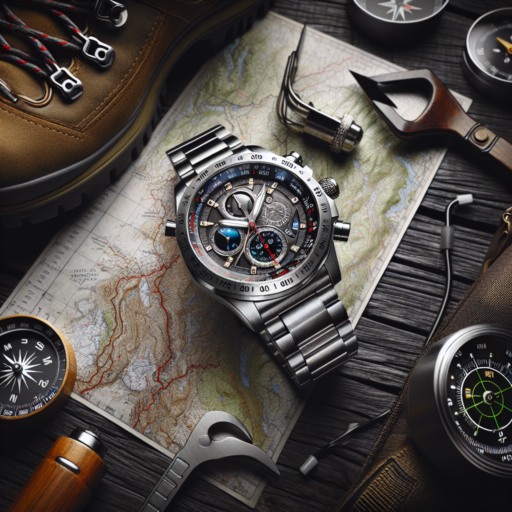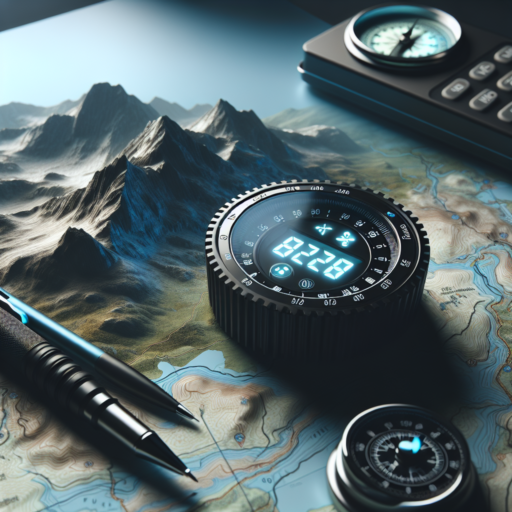Which smart watches have an altimeter?
Finding the right smart watch that includes an altimeter function can greatly enhance the experience for outdoor enthusiasts and fitness buffs who enjoy activities such as hiking, climbing, and flying. An altimeter is instrumental in providing users with accurate elevation data, a feature that has been integrated into several high-end smart watches. Below, we delve into some of the popular brands known for incorporating this functionality into their devices.
Popular Smart Watches with an Altimeter
- Apple Watch Series: Known for its precision and versatility, the Apple Watch Series (starting from Series 3 and newer) offers a built-in altimeter that continuously tracks elevation changes in real time, making it a favorite among fitness enthusiasts.
- Garmin Fenix Series: Designed with adventurers in mind, the Garmin Fenix series boasts a barometric altimeter as part of its trifecta of sensors. This allows for more accurate tracking of ascent, descent, and flat terrain movements, ideal for the most rugged terrains.
- Samsung Galaxy Watch: The latest models of the Samsung Galaxy Watch come equipped with an altimeter, appealing to those who wish to monitor their elevation gain during activities like hiking and skiing.
These smart watches not only provide altitude information but also bring a suite of other features like heart rate monitoring, GPS, and more, making them a versatile choice for anyone looking to enhance their physical activity tracking. As manufacturers continue to innovate, the inclusion of altimeters in smart watches is becoming more common, offering greater accuracy and functionality for users passionate about outdoor activities and fitness tracking.
How accurate are altimeter watches?
The accuracy of altimeter watches is a topic of considerable interest to outdoor enthusiasts, pilots, and anyone who relies on precise elevation data. These advanced pieces of technology have made significant strides over the years, but it’s important to understand their limitations and capabilities.
At their core, altimeter watches measure elevation using either barometric pressure or GPS data. Barometric altimeters, which are more common, calculate altitude by measuring changes in atmospheric pressure. This method is generally reliable, but it can be influenced by weather changes, potentially affecting accuracy. On the other hand, GPS-based altimeters derive altitude by triangulating satellite signals. While this method is less susceptible to weather-related inaccuracies, its precision can be compromised in areas with limited sky visibility, such as dense forests or deep valleys.
Manufacturers continuously refine their technology to improve the precision of altimeter watches. Many models now feature calibration options, allowing users to set a base elevation for more accurate readings. Additionally, some watches offer a combination of barometric and GPS data, aiming to provide the best of both worlds in terms of accuracy and reliability. Despite these advancements, it’s crucial for users to understand that no altimeter watch can guarantee 100% accuracy, and readings should be taken as estimations rather than exact figures.
What is the altimeter in a watch?
An altimeter in a watch is an advanced feature that measures the current elevation of the device relative to sea level. Often found in high-end sports and outdoor watches, this technology is crucial for adventurers, hikers, and anyone needing to know their altitude. Utilizing atmospheric pressure to gauge altitude, these watch altimeters are indispensable tools for outdoor navigation and safety.
How Does an Altimeter Work in a Watch?
Altimeters in watches operate based on the principle of barometric pressure. As you ascend or descend, the atmospheric pressure changes, and the watch uses this data to calculate your current elevation. Recent models are remarkably accurate, offering readings that can help with weather prediction, as a rapid decrease in atmospheric pressure could signify an approaching storm.
Key Features of Watch Altimeters
- Altitude Measurement: The primary function, providing real-time elevation data.
- Ascent/Descent Recording: Some models can track the total elevation gained or lost during a hike or climb.
- Barometric Pressure Trend: Offers insights into potential weather changes, enhancing safety during outdoor activities.
Integrating an altimeter into a watch combines practicality with innovation, offering users not just a timepiece but a potentially lifesaving tool. Whether for professional use or leisure, a watch with an altimeter can add a new dimension to outdoor adventures.
No se han encontrado productos.
Do Garmin watches have altimeters?
Indeed, many Garmin watch models are equipped with altimeters, a feature highly appreciated by outdoor enthusiasts and athletes alike. The inclusion of altimeters in Garmin watches highlights the brand’s focus on providing tools that are not just for timekeeping but for enhancing the outdoor experience, navigation, and fitness tracking. These devices utilize state-of-the-art technology to measure altitude, a critical piece of data for hikers, climbers, and anyone involved in altitude-related sports.
How Garmin Altimeters Enhance Outdoor Activities
Garmin watches with altimeters offer significant advantages for outdoor activities. By accurately measuring ascent and descent, these watches provide users with valuable insights into their performance and the terrain. They are particularly useful for planning routes in mountainous areas, where understanding elevation changes is essential. Furthermore, altitude data can help users gauge their acclimatization to high elevations, essential for avoiding altitude sickness.
Altitude Readings and Fitness Insights
Moreover, Garmin’s integration of altimeters in watches goes beyond mere altitude measurement. These devices leverage altitude data to offer comprehensive fitness insights. For example, they can calculate the elevation gain during a run, hike, or bike ride, providing a more complete picture of the workout’s intensity. This information is invaluable for athletes focusing on specific training aspects like elevation gains or preparing for competitions that involve significant altitude changes.




